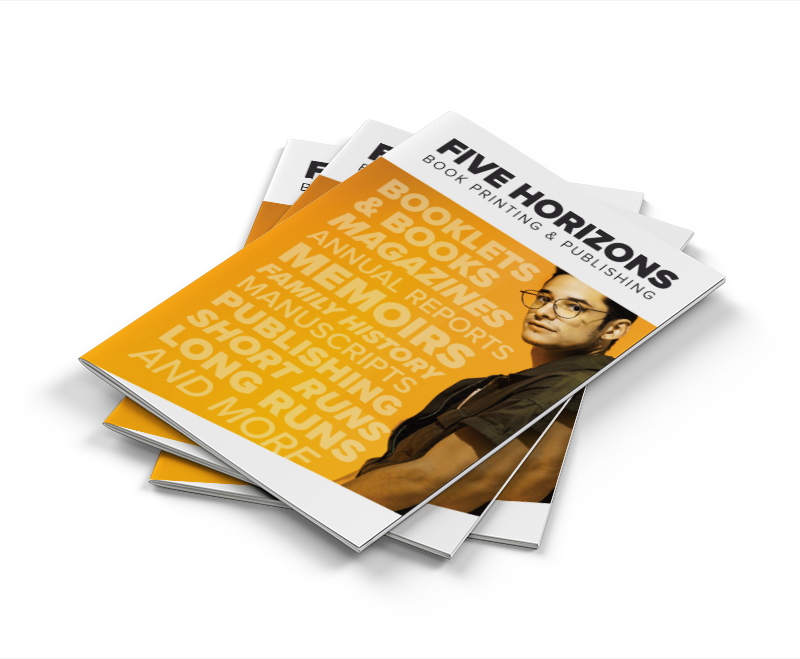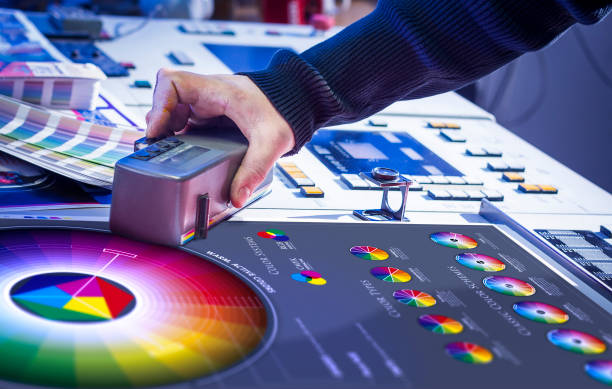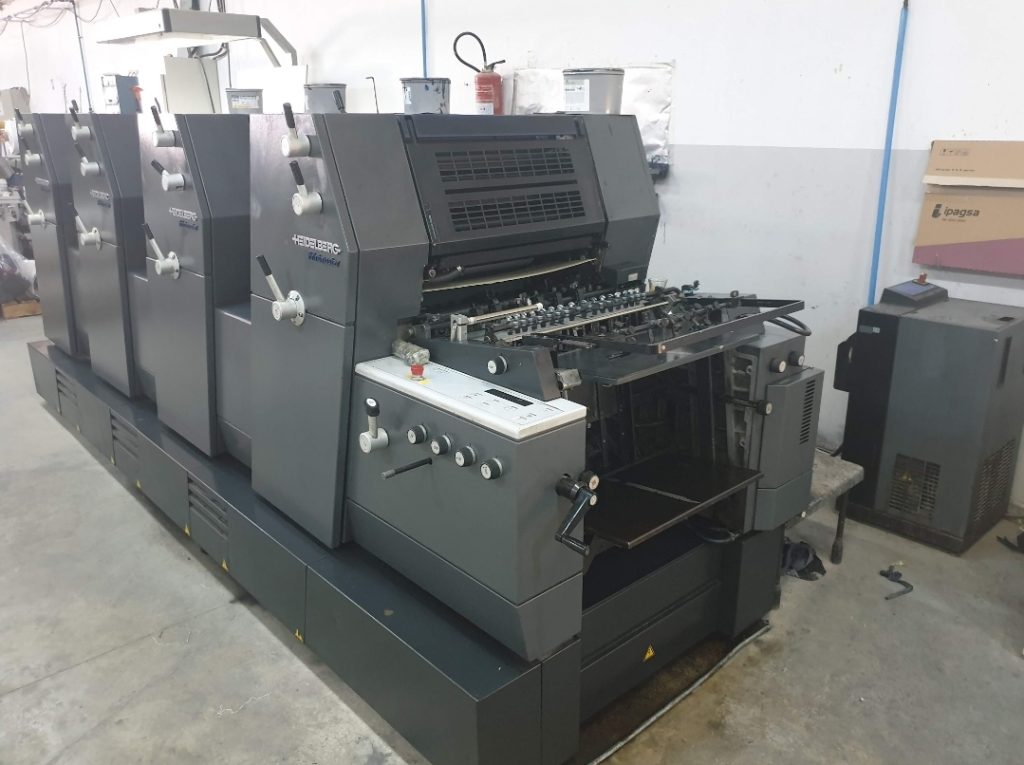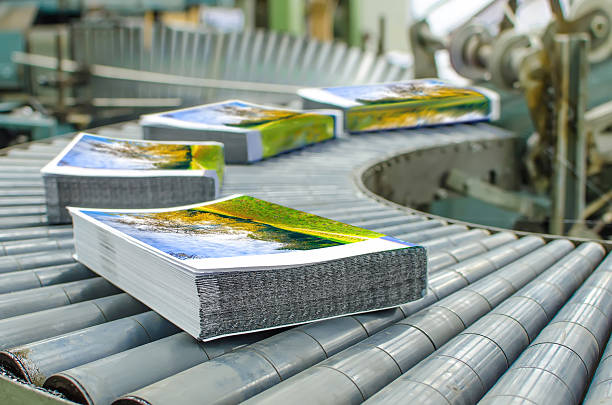






Welcome to our comprehensive guide on booklet printing in Australia. In this article, we will explore the key differences between digital and offset printing methods, helping you make an informed decision for your printing needs. Whether you’re a business owner, a marketing professional, or someone looking to print booklets for personal use, understanding the nuances of these printing technologies is crucial.
With the advancement of digital printing technology, the printing industry has undergone a significant transformation. While both digital and offset printing offer their own set of benefits, choosing the right method can greatly impact your print quality, budget, and environmental footprint. Let’s dive in and uncover the differences between digital and offset booklet printing in Australia.
Welcome to the world of booklet printing in Australia! Whether you’re a business looking to showcase your products or services, an event organizer promoting an upcoming conference, or an artist creating a portfolio, booklet printing offers a versatile and professional way to communicate your message.
Booklet printing is a widely used method in Australia for creating brochures, catalogs, manuals, and more. It involves the process of printing individual sheets of paper with content and then binding them together to form a booklet. This process allows for the creation of compact and visually appealing publications that can be easily distributed or displayed.
The printing process for booklets typically involves two main options: digital printing and offset printing. Digital printing uses digital files and inkjet or toner technology to reproduce the desired content, while offset printing uses printing plates to transfer ink onto paper. Both methods have their own unique advantages and considerations, which we will explore further in this article.
Once the printing process is complete, the next step is binding the printed sheets together. There are several binding options available in Australia, each offering its own aesthetic and functional benefits. Popular choices include saddle stitch, perfect binding, coil binding, and wire-o binding. The binding option you choose will depend on factors such as the desired durability, the number of pages, and the overall look and feel you want to achieve for your booklet.
Now that we have provided an overview of booklet printing in Australia, including the printing process and binding options, let’s dive into the specific details of digital and offset printing technologies and explore the advantages and considerations of each method.

In this section, we will explore digital printing technology and its impact on booklet production. Digital printing has revolutionized the printing industry with its numerous advantages and advancements in toner and inkjet technologies.
Digital printing has transformed the way booklets are produced, offering significant benefits over traditional printing methods. With digital printing, booklets can be produced faster and more efficiently, thanks to the elimination of lengthy setup processes required in offset printing. This results in quicker turnaround times, making it the ideal choice for projects that require tight deadlines.
Digital printing also allows for greater flexibility in customization. Whether it’s variable data printing or personalization, digital technology enables the production of custom booklets tailored to individual clients or specific target audiences. This level of personalization enhances the impact and effectiveness of the printed materials.
Typically when printing a book, front cover and back cover are printed first to accommodate finishing option(and drying) whilst the inner pages are still being produced. With Digital this doesn’t matter as much, due to the colour toner drying time being almost instantaneous (as opposed to ink, which can take a couple of days to dry – especially on thicker uncoated paper or 100% recycled stocks)
Digital printing technology offers several advantages for creating custom booklets. One key advantage is the ability to upload your print file for print on demand, eliminating the need for large print runs and excess inventory. This reduces costs and ensures that only the required quantity of booklets is printed at any given time. Additionally, digital printing allows for easy modification and updates to booklet content, enabling last-minute changes or versioning options.
Another advantage of digital printing is the high level of print quality it delivers. Technological advancements in toner technology and inkjet technology have significantly improved the color accuracy, sharpness, and detail in digital prints. This ensures that custom booklets produced through digital printing have exceptional quality and visual appeal.
Both toner and inkjet technologies play a crucial role in digital printing. For example, toner technology, commonly used in laser printers, produces crisp, sharp prints with precise details. It offers excellent color consistency and durability, making it suitable for a wide range of applications, including booklets.
In contrast, inkjet technology utilizes liquid ink to create vibrant, high-quality prints. Inkjet printers can achieve a wider color gamut, allowing for more accurate color reproduction and vivid imagery. This makes inkjet technology ideal for graphics-rich booklets or materials that require photo-quality prints.
The advancements in toner and inkjet technologies have contributed to the increasing popularity of digital printing, offering superior print quality, versatility, and speed.
| Toner Technology | Inkjet Technology |
|---|---|
| Produces sharp, precise prints | Offers vibrant colors and a wide color gamut |
| Excellent color consistency | High-quality photo reproduction |
| Durable prints | Can print on a variety of media |

In this section, we will delve into the traditional craft of offset printing. Offset printing is a time-tested technique that has been used in the printing industry for many years. It involves the transfer of inks (either CMYK or PMS) from a printing plate to a rubber blanket, which then applies the ink to the paper. This process is known for its high print quality and color accuracy, making it a popular choice for various printing projects.
The offset printing process consists of several steps, including image separation, plate creation, ink application, and paper feeding. Here is a brief overview of the offset printing process:
Offset printing offers several advantages:
Offset printing is well-suited for large volume orders due to its efficiency and ability to maintain consistent print quality throughout the entire print run. The offset printing process allows for faster production speeds compared to other printing methods, making it more time-efficient for large-scale projects. Additionally, once the printing plates are created, they can be used repeatedly, reducing setup costs and making each additional print more cost-effective. These factors make offset printing a cost-efficient choice for businesses or organizations that require a large quantity of printed materials.
In offset printing, printing plates play a crucial role in transferring the image onto the paper. The image on the printing plates is created using a combination of chemical, mechanical, or laser etching processes, depending on the plate material. The plates are carefully mounted onto the printing press, where they come into contact with the blanket cylinder. The ink is applied to the printing plates and then transferred to the blanket cylinder, which in turn transfers the ink to the paper. The use of printing plates allows for precise and consistent image reproduction, helping to achieve the high print quality associated with offset printing.
| Advantages of Offset Printing | Considerations |
|---|---|
| High print quality and color accuracy | Requires longer setup time for plate creation |
| Cost-effective for large volume orders | Not suitable for short print runs |
| Versatility with various paper types and finishes | May not be suitable for projects with tight timelines |
In this section, we will compare digital printing and offset printing, two popular methods used in booklet printing in Australia. Both methods have their own advantages and limitations, so it’s important to understand the differences between them before making a decision.
When it comes to print quality, offset printing has traditionally been known for its superior results. It offers a wider color gamut and better color accuracy, making it ideal for projects that require high-resolution images and vibrant colors. On the other hand, digital printing has significantly improved in recent years and can now produce prints that are almost indistinguishable from offset prints. While digital printing may not match the print quality of offset printing for large-scale commercial projects, it is more than sufficient for most booklet printing needs.
When considering the cost analysis of digital and offset printing, several factors come into play. For small print runs or projects that require personalization, digital printing is generally more cost-effective. Digital printing eliminates the need for expensive setup costs and allows for on-demand printing, reducing the wastage of unused prints. However, as the print volume increases, offset printing becomes more cost-effective due to its efficiency in handling large-scale production. If you have a high-volume print job, offset printing may provide significant cost savings in the long run.
Another important factor to consider is the turnaround time. Digital printing offers a quicker turnaround compared to offset printing. With digital printing, you can have your booklets printed and ready for distribution in a matter of days. On the other hand, offset printing requires more time for setup and plate creation, making it a lengthier process. If you have a tight deadline and need your booklets printed rapidly, digital printing is the better option.
When it comes to environmental impact, digital printing has the advantage over offset printing. Digital printing produces fewer chemical waste and uses less energy compared to the traditional offset printing process. Additionally, digital printing allows for on-demand printing, reducing the amount of wasted paper and resources. If sustainability and minimizing your carbon footprint are important considerations for your booklet printing, digital printing is the more eco-friendly choice.
| Digital Printing | Offset Printing | |
|---|---|---|
| Print Quality | Comparable to offset printing for most projects | Superior color accuracy and vibrancy |
| Cost Analysis | Cost-effective for small print runs and personalization Higher cost per unit for larger volumes | More cost-effective for high-volume print jobs |
| Turnaround Time | Quicker turnaround, suitable for tight deadlines | Longer setup time, suitable for longer production timelines |
| Environmental Impact | Produces less chemical waste and uses less energy | Higher chemical waste and energy consumption |

When it comes to booklet printing in Australia, choosing between digital and offset printing can be a challenging decision. There are several factors that influence the choice of printing method, including budget, desired print quality, and print volume. In this section, we will explore these factors and provide guidance to help you make an informed decision.
When considering booklet printing in Australia, it’s important to take into account the specific factors that can influence your choice of printing method. These factors include:
Cost efficiency and quality assessments play a crucial role in choosing the right printing method for your booklet. Consider the following:
The print volume of your booklet can greatly influence your decision between digital and offset printing. Here’s how:
By carefully considering these factors, you can make an informed decision on whether digital or offset printing is the right choice for your booklet printing needs in Australia.
| Factors | Digital Printing | Offset Printing |
|---|---|---|
| Budget | Cost-effective for small print runs | Economical for large print volumes |
| Print Quality | High-quality results | Excellent detail and color accuracy |
| Turnaround Time | Faster turnaround due to minimal setup | Longer turnaround due to setup time |
In the world of booklet printing, print quality and resolution are key factors that determine the overall visual appeal and professionalism of the final product. Whether you choose digital printing or offset printing, both methods can deliver high-quality prints with sharp images and text.
Print quality refers to the clarity, sharpness, and color accuracy of the printed material. Both digital and offset printing techniques have evolved to produce exceptional print quality. Digital printing utilizes advanced technologies, such as laser and inkjet, to achieve vibrant colors and sharp details. On the other hand, offset printing uses a combination of ink and physical plates to create precise and consistent prints with excellent color reproduction.
Resolution plays a vital role in creating professional-looking booklets. It refers to the level of detail and clarity of the images and text in the printed material. In digital printing, images and text are directly transferred from a digital file to the printing substrate, resulting in sharp and high-resolution prints. Offset printing uses a process where the printing plates transfer ink onto the substrate, ensuring accurate and sharp reproduction of intricate details.
| Print Quality | Resolution |
|---|---|
| Digital Printing | High print quality with vibrant colors and sharp details |
| Offset Printing | Precise and consistent prints with excellent color reproduction |
Both digital and offset printing offer exceptional print quality and resolution. Consider the specific requirements of your booklet printing project, such as the desired colors, level of detail, and overall visual impact. By understanding the capabilities of each printing method, you can make an informed decision that best suits your booklet printing needs.
In order to make an informed decision about which printing method is more cost-effective for your booklet, It doesn’t vary whether you are printing magazines, product catalogues or a novel – it’s important to calculate the printing expenses involved. The total cost will depend on multiple factors, such as the size of the booklet, the page count (even the number of blank pages), the paper quality, and the finishing options.
Here is a breakdown of the key expenses to consider:
Both digital and offset printing offer unique economic advantages:
One important aspect to confirm is the break-even point for offset printing. The break-even point is the print volume at which the total cost of offset printing becomes equal to or lower than digital printing.
To calculate the break-even point, you need to consider the setup costs, the cost per unit for each printing method, and the expected print volume. By comparing these factors, you can determine the threshold at which offset printing becomes the more economical choice.
It’s recommended to perform a cost analysis and evaluate different print scenarios to identify the break-even point and determine the most cost-effective printing method for your specific booklet requirements.

In today’s world, sustainability is a key consideration in every industry, including printing. The Australian printing industry has recognized the importance of reducing its environmental impact and has taken steps towards implementing more eco-friendly practices. In this section, we will explore the sustainability initiatives in the Australian printing industry and discuss the eco-friendly advantages of digital printing.
The Australian printing industry has made significant efforts to prioritize sustainability and minimize its environmental footprint. Printers are adopting greener practices by implementing energy-efficient technologies, reducing harmful emissions, and utilizing recycled materials. By embracing sustainable production methods, the industry aims to reduce its overall environmental impact and contribute to a greener future.
Digital printing, when compared to traditional offset printing, offers several eco-friendly advantages. Firstly, digital printing eliminates the need for printing plates, reducing waste and minimizing the release of harmful chemicals into the environment. Additionally, digital printing enables on-demand printing, allowing for reduced print volumes and avoiding unnecessary waste. Digital printing also consumes less energy because it eliminates the setup time required for offset printing.
Furthermore, digital printing provides the option for variable data printing, which allows for personalized content and targeted marketing. This targeted approach reduces the need for mass printing and ultimately leads to less paper waste. With digital printing, every booklet can be customized to address specific customer needs, maximizing resource efficiency.
Overall, the Australian printing industry is committed to continuous improvement in sustainability practices. Digital printing, with its reduced waste, energy consumption, and ability to support targeted printing, offers clear ecological advantages over traditional offset printing methods.
After examining the differences between digital and offset booklet printing in Australia, it is clear that both methods have their advantages and considerations. When it comes to print quality, offset printing offers exceptional results with vibrant colors and sharp details. However, digital printing has made significant advancements and can produce excellent quality booklets as well.
Cost efficiency is another crucial factor to consider. While digital printing has lower setup costs and is more suitable for small print runs, offset printing becomes more cost-effective for larger volumes. It is important to assess your budget and print requirements to make the right choice.
Lastly, the environmental impact should not be overlooked. Digital printing offers eco-friendly advantages such as reduced waste and energy consumption. As sustainability becomes increasingly important, opting for digital printing can contribute to a greener printing industry.
In conclusion, whether you choose digital or offset printing for your booklet printing needs in Australia depends on various factors. Consider the print quality, cost efficiency, and environmental impact when making your decision. By carefully evaluating these aspects, you can find the printing method that best aligns with your goals and requirements.
Digital printing offers faster turnaround times and lower setup costs, making it ideal for custom booklets. Offset printing is best for large volume orders due to its high print quality and color accuracy.
Booklets in Australia are typically printed using either digital or offset printing methods. The binding options include saddle stitched booklets, which involves staples along the spine, creating a professional and secure bound booklet.
Digital printing technology has revolutionized booklet production by offering faster turnaround times and lower setup costs. It also enables the creation of custom booklets with ease.
Digital printing allows for flexibility in customization and personalization, making it ideal for creating custom booklets. The use of toner and inkjet technologies ensures high-quality prints with sharp images and text. Often it is simple as submitting your file as a scrolling pdf file as single pages, and away we go !
Offset printing is best suited for large volume orders due to its high print quality, color accuracy, and cost efficiency. The use of printing plates ensures consistent and reliable results.
Digital printing offers faster turnaround times and lower setup costs, while offset printing provides high print quality and color accuracy. The choice between the two methods depends on factors such as print volume, budget, and desired print quality.
Factors to consider include budget constraints, print volume, desired print quality, and turnaround time. Evaluating the cost efficiency and quality assessments will help in making an informed decision.
Both digital and offset printing methods can achieve high-quality prints with sharp images and text. The use of advanced printing technologies and high-resolution images ensures professional-looking booklets.
The cost analysis involves calculating printing expenses for your booklet, including factors such as paper stock, print quantity, size of the books (eg A4 Booklets cost more than A5, purely due to the amount of consumables used in paper size) and finishing options. Comparing the economic advantages of digital and offset printing will help you choose the most cost-effective option.
Digital printing is more eco-friendly as it reduces waste and energy consumption compared to offset printing. Sustainability is an important consideration, and choosing a printing method that minimizes environmental impact is advisable.
Copyright © 2025 Five Horizons. All Rights Reserved.